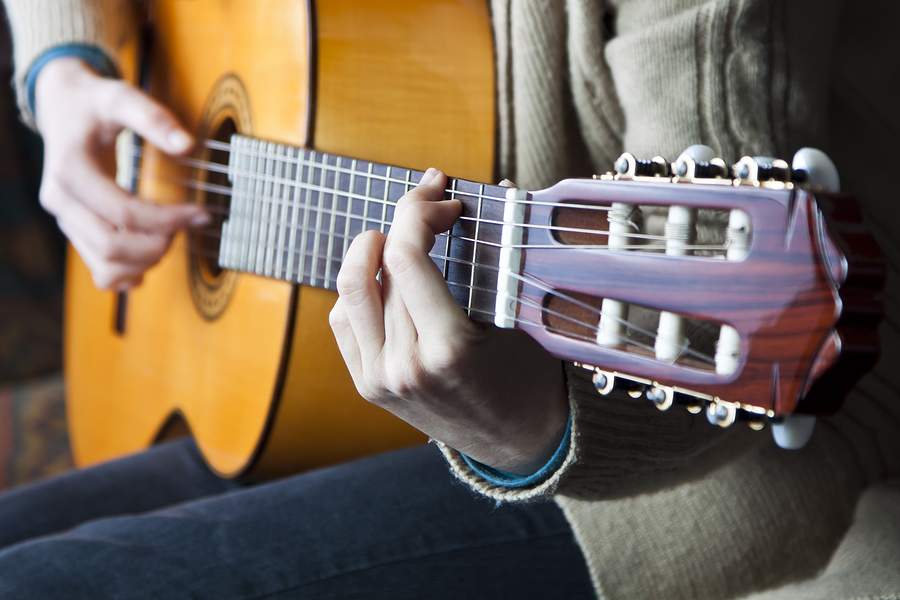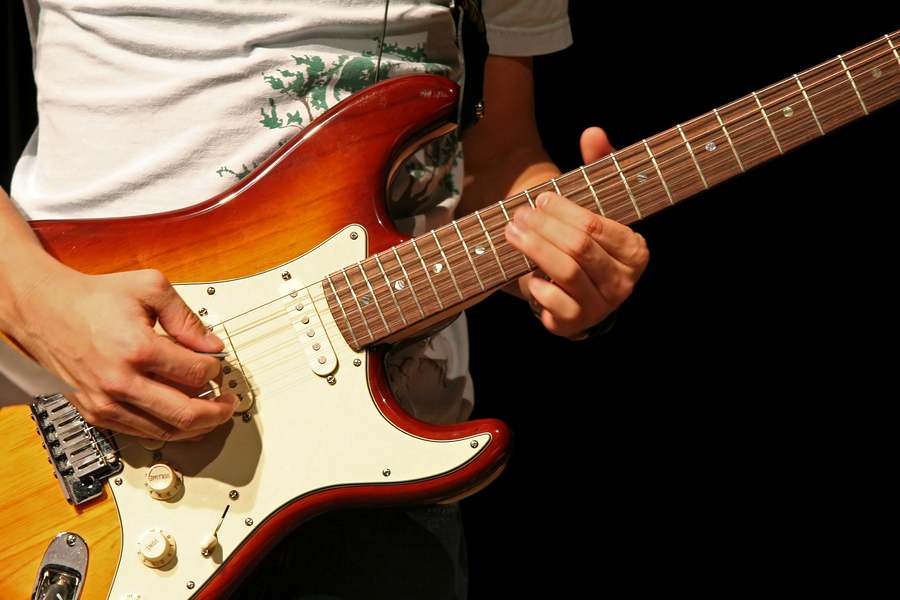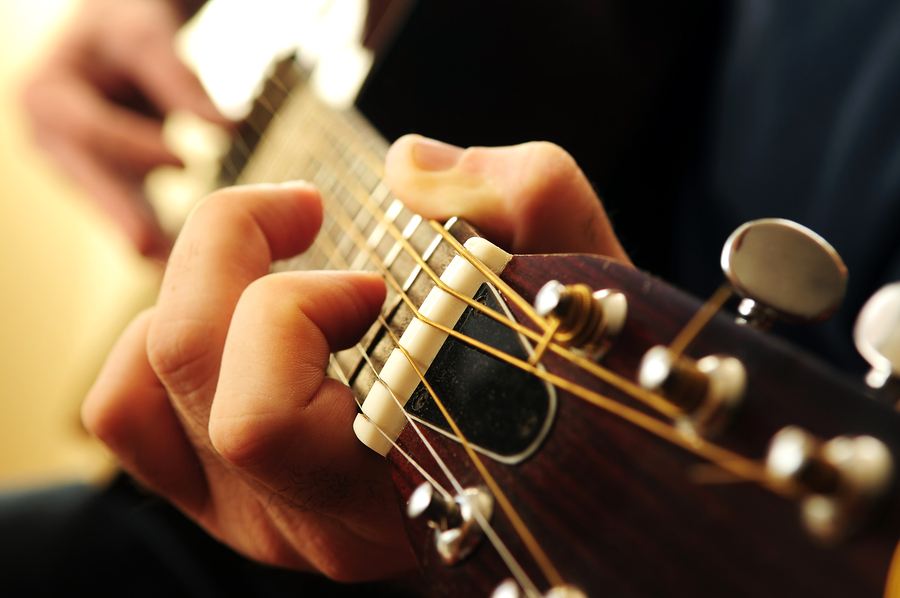
I first got briefly introduced with proper posture and good practice habits by Al Di Meola’s chords, scales and arpeggios book. For me he is just one of the coolest guitar dudes on the planet, so what he wrote in the book was a good place to start with.
Proper guitar posture is not something every guitar player is aware of or takes seriously.
That’s because improper posture and bad habits will not immediately result in injuries.
But over the long term guitar players can get back, shoulder, neck, elbow, arm and wrist pains, RSI (repetitive strain injuries), tendonitis, CTS (Carpal Tunnel Syndrome) and other nasty side effects.
This is certainly not every guitar player’s destiny, but it’s not out of the question either. But there’s good news! Proper posture can prevent a lot of these injuries and it makes guitar playing easier and more pleasant.
A good hand positioning is here also really important to learn to play effectively and properly. Every detail makes all the difference in the world.
Let’s take a closer look:
Continue Reading Sweep picking is a picking technique that was invented and developed by jazz guitarists Chuck Wayne and Tal Farlow.
Sweep picking is a picking technique that was invented and developed by jazz guitarists Chuck Wayne and Tal Farlow. Most intermediate guitar players can find the notes across the neck on the 6th (low E) and 5th string (A). This is essential for learning barre chords, soloing and a lot of other stuff. If you don’t know the notes on the 6th and 5th string yet check out
Most intermediate guitar players can find the notes across the neck on the 6th (low E) and 5th string (A). This is essential for learning barre chords, soloing and a lot of other stuff. If you don’t know the notes on the 6th and 5th string yet check out  A lot of guitar players use only one pentatonic position / shape: The first position (E shape) it’s because it’s the most comfortable shape to play in.
A lot of guitar players use only one pentatonic position / shape: The first position (E shape) it’s because it’s the most comfortable shape to play in.